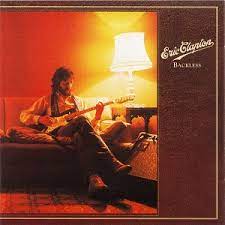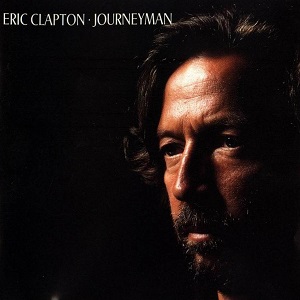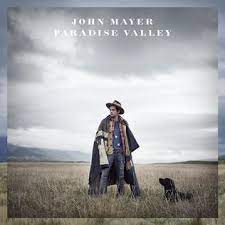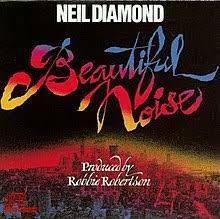- Home
- Motown Pop & Blues
- Eric Clapton Album Covers
Eric Clapton Album Covers
On The Acoustic
Check out these Eric Clapton album covers on the acoustic below. On this page you'll find many free pdf chord and lyric sheets along with tutorial demos and links to purchase full lessons in .mp4 format.

Bell Bottom Blues
Easy Now
Further On Up The Road
How Deep Is The Ocean
I Can't Stand It
I Shot The Sheriff
I've Got A Rock N Roll Heart
Kindhearted Woman Blues
Lay Down Sally
Layla
Let It Rain
Malted Milk
My Fathers Eyes
Promises
Ramblin On My Mind
Rockin Chain
Running On Faith
San Francisco Bay Blues
They're Red Hot
Thorn Tree In The Garden
Watch Out For Lucy
Eric Clapton Album Covers
Chords, Lyrics, Demos, Tutorials
Before You Accuse Me

Before You Accuse Me is a blues song that was originally recorded by Bo Diddley in 1957. Eric Clapton covered the song for his 1989 album "Journeyman."
Clapton's version of the song features a classic blues rock arrangement with his signature guitar playing style. The song begins with a simple riff and builds into a driving rhythm with Clapton's vocals and guitar solos leading the way.
The song was released as a single and became a hit for Clapton, reaching the top 40 on the US Billboard Hot 100 chart. It has since become a staple of his live performances and is often included in his greatest hits compilations.
The song's lyrics are a warning to a lover who is accusing the singer of wrongdoing. He pleads with her to take a closer look at her own actions before casting blame on him. The lyrics are typical of the blues genre, which often deals with themes of love, loss, and redemption.
Eric Burdon from The Animals and CCR have also covered this song.
Chords & Lyrics
Jump To Top
Bell Bottom Blues

Bell Bottom Blues came about as a request from George Harrison's wife Patty Boyd who requested Clapton pick her up a pair on Bell Bottoms (wide flare pants at the bottom) from the USA on his next trip there. Apparently that fashion statement had not hit the UK yet. Boyd was married to Harrison for 11 years, divorced him and married Clapton and then they divorced after 10 years.
Clapton's recording of "Bell Bottom Blues" features his soulful and emotional guitar playing, along with his passionate vocals. The song is characterized by its slow tempo and a melancholic melody that perfectly captures the heartache and longing expressed in the lyrics.
The song's title refers to the fashion trend of wearing bell-bottomed pants, which were popular in the 1970s. Clapton uses this as a metaphor for his emotional state, saying that his heart is "hanging upside down" like the pants.
The number has since become one of Clapton's most beloved and enduring songs, with many fans considering it to be one of his finest works. The song has been covered by numerous artists over the years and continues to be a staple of Clapton's live performances.
The song appears on the 1971 Derek and the Dominos album "Layla and Other Assorted Love Songs.
Jump To Top Of Eric Clapton Album Covers
Easy Now

Easy Now is a song written and recorded by Eric Clapton, and it first appeared on his 1970 self-titled solo album. The song is a slow blues number that features Clapton's soulful guitar playing and heartfelt vocals.
The lyrics of "Easy Now" reflect Clapton's personal struggles with addiction and his efforts to overcome them. The song is a plea for himself to take it easy and not push himself too hard, both physically and mentally.
Musically, "Easy Now" is characterized by its laid-back tempo and simple arrangement. Clapton's guitar playing is understated and minimalistic, providing a perfect backdrop for the introspective lyrics.
Although "Easy Now" was not released as a single, it has become a fan favorite and is often included in Clapton's live performances. The song showcases Clapton's talent as a songwriter and guitarist, and it remains a poignant reminder of his struggles and triumphs over addiction.
It did appear on the 1970 B-side of After Midnight and again on the B-side of the 1972 single "Let It Rain". Because of that, the song itself did reach the charts in several countries.
Jump To Top
Further On Up The Road

Further On Up The Road is an old 1957 tune first recorded by Bobby "Blues" Bland who had some success with his version. The original title is Farther Up The Road but Clapton changed it to the first line in the song to "Further On Up The Road". This song was one of many Eric Clapton album covers that appeared on several albums, the first one back in 1976.The song
The song is classic blues that has been covered by many artists over the years. Eric Clapton recorded the song for his 1975 album "There's One in Every Crowd."
Clapton's version of "Further On Up The Road" features his signature guitar playing and soulful vocals. The song starts with a simple guitar riff and gradually builds into a driving rhythm with Clapton's vocals and guitar solos taking center stage.
The lyrics of the song tell the story of a man who is looking for love and happiness, but finds himself constantly searching for something more. The refrain "further on up the road" is a metaphor for the journey of life, and the idea that there is always more to discover and experience.
The track is a testament to Clapton's talent as a guitarist, singer, and songwriter, and a classic example of the blues rock genre.
Jump To Top Of Eric Clapton Album Covers
How Deep Is The Ocean

How Deep Is The Ocean dates back to 1932 and was written by Irving Berlin. Clapton recorded a version for his 2010 album "Clapton".
Clapton's version of "How Deep Is The Ocean" features his soulful guitar playing and smooth vocals, backed by a jazz-infused arrangement. The song starts with a slow and melodic guitar solo, before building into a fuller sound with a piano and saxophone.
The lyrics of the song speak to the depth and intensity of love, using the ocean as a metaphor for the boundless and timeless nature of the emotion. Clapton's interpretation of the song is both sensitive and heartfelt, capturing the essence of the lyrics and the mood of the melody.
The Clapton recording of "How Deep Is The Ocean" is a beautiful tribute to both Irving Berlin's songwriting and Robert Johnson's influence on Clapton's music. The song showcases Clapton's versatility as an artist and his ability to bring new life to classic songs.
Jump To Top
I Can't Stand It

I Can't Stand It is a song that was recorded by Eric Clapton for his 1981 album "Another Ticket." The song was written by Clapton himself and features his signature blues-rock guitar style.
The track was released as a single in 1981 and became a moderate hit in the UK and the US, reaching the top 20 on the Billboard Mainstream Rock chart. The song features a catchy guitar riff, a simple yet effective chorus, and a driving rhythm section.
This number showcases Clapton's blues roots and his ability to craft a memorable rock song. The track is notable for its energy and upbeat feel, which sets it apart from some of Clapton's more melancholy and introspective work.
Clapton scored a #1 hit in the US and Israel with this single. The song also crossed over and hit #10 on the US Hot 100 Charts.
Jump To Top Of Eric Clapton Album Covers
I Shot The Sheriff

I Shot the Sheriff is a Bob Marley song that was originally written and recorded by Bob Marley in 1973. However, it was Eric Clapton's cover of the song that brought it mainstream success. Clapton recorded the track for his 1974 album "461 Ocean Boulevard," which marked a significant change in his musical direction.
Clapton's version of "I Shot the Sheriff" features his trademark guitar work, blending blues and reggae influences to create a unique sound. The track became a huge hit, reaching the top 10 on the Billboard Hot 100 and earning Clapton his first number one single on the Billboard Mainstream Rock chart.
The song's lyrics tell the story of a man who admits to shooting the local sheriff but claims it was in self-defense. The track's message of social justice and rebellion resonated with audiences at the time and has since become a classic of both the reggae and rock genres.
Jump To Top
I've Got A Rock And Roll Heart

I've Got a Rock 'n' Roll Heart was recorded by Eric Clapton for his 1983 album "Money and Cigarettes." The track was written by Troy Seals, Eddie Setser, and Steve Diamond and features a catchy, upbeat melody and a classic rock 'n' roll vibe.
The song was released as a single in 1983 and became a hit in the US, reaching the top 20 on the Billboard Hot 100 chart. "I've Got a Rock 'n' Roll Heart" features Clapton's signature guitar playing, with a prominent guitar riff throughout the song and a brief but impressive guitar solo.
This song is a classic example of Eric Clapton's ability to craft memorable, feel-good rock songs. The track remains a favorite of Clapton fans and is often included in his live shows.
Jump To Top Of Eric Clapton Album Covers
Kindhearted Woman Blues
Jump To Top Of Eric Clapton Album Covers
Lay Down Sally

Lay Down Sally is from Eric Clapton's 1977 album "Slowhand." The track was written by Clapton, Marcy Levy, and George Terry and features a laid-back, country-influenced sound.
The song was released as a single in 1978 and became a hit in the US, reaching the top 40 on the Billboard Hot 100 chart. "Lay Down Sally" features a memorable guitar riff and solo from Clapton, as well as a catchy chorus and a prominent backing vocal from Marcy Levy.
The track's lyrics tell the story of a woman who is hesitant to commit to a relationship, with Clapton urging her to "lay down Sally, and rest you in my arms." The song's upbeat, relaxed feel and country influences set it apart from some of Clapton's more blues and rock-oriented work.
Jump To Top
Layla

Layla was co-written by Eric Clapton and Jim Gordon back in 1970 while Clapton was still a part of Derek And The Dominos. The song also has some roots to the fact that Clapton had a desire for Patti Boyd, who was George Harrison's girl at the time.
The original version of this song was in 1972 but the Unplugged version in 2004 was the most successful winning a Grammy that year for the best rock song.
The song also made it into the Grammy Hall Of Fame in 1998.
Jump To Top Of Eric Clapton Album Covers
Let It Rain

Let It Rain was actually a B-side track to "Easy Now" from 1972 and has appeared on over a dozen Clapton albums through the years but first appeared on his1970 self-titled album, also known as "Eric Clapton" or "The Brown Album." The track features a catchy, bluesy riff and a memorable guitar solo from Clapton.
The song was released as a single in 1970 and became a hit in the UK, reaching the top 50 on the singles chart. "Let It Rain" features Clapton's signature guitar playing, with a riff that is both driving and melodic. The track also features some impressive keyboard work from Bobby Whitlock, who was a frequent collaborator of Clapton's in the early 1970s.
The song's lyrics encourage the listener to let go and embrace the freedom of the moment, with Clapton singing, "Let it rain, let it rain, let your love rain down on me." The track's upbeat, positive message and catchy melody make it a fan favorite and a staple of Clapton's live shows.
Jump To Top
Malted Milk

Malted Milk is a blues song that was originally recorded by Robert Johnson in 1937. Eric Clapton recorded a cover of the song for his 1992 album "Unplugged," which became a huge success and won several Grammy Awards.
Clapton's version of "Malted Milk" features his signature acoustic guitar playing, with a stripped-down, intimate arrangement that highlights the song's bluesy melody and lyrics. The track also features some impressive slide guitar work from Clapton, adding a new dimension to the song.
The song's lyrics tell the story of a man who has lost his love and is struggling to cope with the pain, with Clapton singing, "I keep drinking malted milk, trying to drive my blues away." The track's melancholy, introspective tone and Clapton's emotive vocals make it a standout track on the "Unplugged" album.
Jump To Top Of Eric Clapton Album Covers
My Fathers Eyes

My Father's Eyes was written and recorded by Eric Clapton for his 1998 album "Pilgrim." The track features a haunting melody and emotional lyrics, inspired by Clapton's search for his own identity and his relationship with his late father.
Clapton's version of "My Father's Eyes" features his signature guitar playing, with a simple, melodic riff that perfectly complements the song's melancholy lyrics. The track also features some beautiful string arrangements, giving it a rich, textured sound.
The song's lyrics explore Clapton's feelings of loss and longing, with the singer reflecting on his father's death and his own struggles with addiction. Clapton sings, "How I wish that he could see the love in my mother's eyes, and hear the laughter of his grandchildren, and see the pleasure in my eyes."
"My Father's Eyes" was a hit for Clapton, reaching the top 20 on the UK singles chart and earning critical acclaim for its emotional depth and musical beauty. The track remains a fan favorite and a testament to Clapton's ability to blend his personal experiences with his exceptional musical talent.
Jump To Top
Promises

Promises was not written by Clapton but was written by Richard Feldman and Roger Linn. Clapton had a top 40 hit song in several countries with this one when it was released in 1978.
The song became a hit in the US, reaching the top 10 on the Billboard Hot 100 chart. The track features a lively, upbeat arrangement, with Clapton's guitar providing the song's driving force.
The song's lyrics tell the story of a man who is struggling to keep his promises to a woman he loves, with Clapton singing, "I'll keep my promises, be true to you, whatever it takes, darling, I'll do it for you." The track's catchy chorus and upbeat melody make it a fan favorite and a staple of Clapton's live shows.
"Promises" hails Eric Clapton for his 1978 album "Backless."
Jump To Top Of Eric Clapton Album Covers
Ramblin On My Mind

Ramblin' On My Mind was first recorded by Robert Johnson in 1936. Eric Clapton recorded his version of the song from in 1966 on an album called "Blues Breakers With Eric Clapton".
Clapton's version of "Ramblin' On My Mind" features his signature blues guitar playing, with a slow, mournful arrangement that perfectly captures the song's melancholy tone. The track also features some impressive harmonica work from Bobby Whitlock, who was a frequent collaborator of Clapton's in the early 1970s.
The song's lyrics express the singer's feelings of restlessness and dissatisfaction, with Clapton singing, "I got ramblin', I got ramblin' on my mind." The track's sparse, bluesy arrangement gives it a timeless quality that has made it a favorite of Clapton's fans.
Jump To Top
Rockin Chair

Rockin' Chair is a blues song that was originally recorded by blues artist Hoagy Carmichael in 1929. Eric Clapton recorded a cover version of the song for his 1976 album "No Reason to Cry."
Clapton's version of "Rockin' Chair" features a slow, bluesy arrangement, with his signature guitar playing providing the song's backbone. The track also features some impressive piano work from legendary musician Dr. John, who collaborated with Clapton on the album.
The song's lyrics tell the story of a man who is reflecting on his life and feeling the weight of his years, with Clapton singing, "Ain't got no ambition, guess I'm out of my mind. I sit here in my rockin' chair, feelin' kind of low and square." The track's melancholy melody and soulful performance make it a standout on the album.
Louis Armstrong also covered this song.
Jump To Top Of Eric Clapton Album Covers
Running On Faith

Running On Faith is a track on the 1989 album Journeyman. This one was never released as a single.
Jump To Top Of Eric Clapton Album Covers
San Francisco Bay Blues

San Francisco Bay Blues was recorded by Jessie Fuller back in 1954 and over the years has been recorded by nearly 100 artists including Eric Clapton, Tom Rush, The Rooftop Singers and many others, and in many languages.
Eric Clapton's version of "San Francisco Bay Blues" appeared on his 1992 live album "Unplugged," which was a highly successful acoustic performance. His rendition of the song helped introduce it to a new audience and remains one of the more popular versions of the track. Clapton's performance on "Unplugged" contributed to the song's enduring popularity.
Jump To Top
They're Red Hot

They're Red Hot was originally recorded by blues legend Robert Johnson in 1936. Eric Clapton recorded a cover version of the song for his 1994 album "From The Cradle," which is a tribute to his blues influences.
Clapton's version of "They're Red Hot" features a lively, upbeat arrangement with a swinging rhythm and horns. The track is built around a catchy riff played on a resonator guitar, and Clapton's vocals are full of energy and attitude.
The song's lyrics describe a food vendor who is selling tamales that are "red hot," and the track's fun, carefree vibe makes it a standout on the album. Clapton's version of the song stays true to the original's blues roots while adding his own signature style to the mix.
There is a great rehearsal TY clip of Clapton with the late Billy Preston in studio trying to get a final take on this song. Worth watching for sure.
Jump To Top
Thorn Tree In The Garden
Thorn Tree In The Garden ... info soon.
Jump To Top
Watch Out For Lucy

Watch Out for Lucy was recorded for Clapton's 1978 album "Backless." The song was written by J.J. Cale, who was a close friend and frequent collaborator of Clapton's.
"Watch Out for Lucy" is an upbeat blues-rock track that features Clapton's signature guitar work and soulful vocals. The song's lyrics caution the listener about a woman named Lucy who is "mean and reckless" and "can really do you in." Despite the ominous subject matter, the track has a fun, lighthearted feel and features some lively piano work and a catchy chorus.
Clapton put this song on the B-Side of his 1978 single release of "Promises".
Jump To Top Of Eric Clapton Album Covers
If you liked this Eric Clapton page you might also like ... (click images)
Motown Rhythm And Blues



